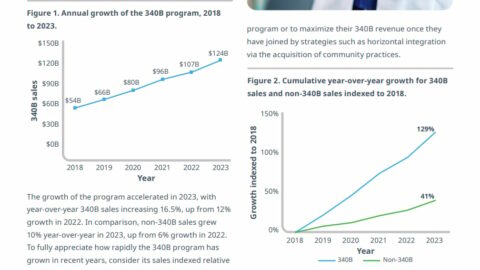If you want to search Cost Curve back issues or link to anything you read here, the web links and archive are online at costcurve.beehiiv.com. You can subscribe there, too.
The idea of just vaporizing patents on medicines deemed overpriced by the government has long been a kind of fever dream among a certain kind of politician, and it’s spurred a great deal of interest in using a 40-year-old law — the Bayh-Dole Act — as the machinery to break patents.
That’s always been a tough sell. The legal basis for using the law in that way is flimsy, and the bill’s namesakes famously wrote a Washington Post op-ed making explicit that Bayh-Dole was never intended to be used as a mechanism to control prices.
There is a growing realization that even if using Bayh-Dole to break patents were legal, it wouldn’t be that effective, because there aren’t that many drugs that even fall under the Bayh-Dole banner (i.e. drugs where the government’s support is cited in the underlying patent). A new JAMA Health Forum piece said only about 2% of medicines could ever be targeted under the law, even if pricing was deemed in-bounds.
Of course, there is more than one way to skin a cat (though it ends poorly for the cat, regardless) and the authors suggest politicians may wish to think harder about patent-breaking via “Section 1498” (which is also legally questionable) or more price controls.
When Rep. Jake Auchincloss pulled together his poll on the entity that was most likely to catalyze the necessary reforms to 340B, he included “HRSA” as one of the options. It did not poll well.
Only 8% of those surveyed thought the agency would be the force to fix the drug discount program.
In some ways, HRSA’s poor showing doesn’t make a lot of sense. In theory, HRSA should be well-positioned to guide and define the program. It has a lot of data on how the program is working, and it sits at the center of the operation of 340B.
But in practice, HRSA is an abysmal change agent.
There are two reasons for that. First off, courts have ruled over and other than HRSA doesn’t have much authority over the program, making it difficult to shape its direction.
More significantly, HRSA isn’t exactly a neutral administrator of the program but rather a vocal and continual advocate for the provider community and a clear and unapologetic opponent of the pharmaceutical industry.
Perhaps the best example of this came in 2020. Manufacturers had begun to try to slow the growth of the program — and impose some transparency — by placing common-sense restrictions on the use of contract pharmacies.
Not only did HRSA object to this, it pushed out an exceedingly snotty advisory opinion that warned drugmakers that they had to accede to every demand made by a covered entity, including shipping 340B-priced meds anywhere the provider demanded, “be it the lunar surface, [or] low-earth orbit.”
That was probably a fun line for the HRSA lawyers to write, but it didn’t exactly scream, “We are a reasonable, independent steward of the program.”
Anyway: all of this is background for one of industry’s latest battles with HRSA.
Drugmakers have been trying to tease out whether the relationship that covered entity providers have with contract pharmacies is legal under the 340B statute. Covered entities have said the approach is OK because the contract pharmacies act solely as agents of the provider, never taking title to the medicines.
But there’s never been any public proof that the provider-contract-pharmacy arrangement actually works that way. I mean, the proof exists: it’s spelled out in the contracts between the providers and the pharmacies, but no one will make those available, even when audited.
HRSA has those contracts. So Sanofi has FOIAed them, only to be stonewalled by HRSA and prompting a lawsuit.
Last week, Lilly joined Sanofi in pressuring the legal system to make those documents available, asking the court to allow their amicus filing detailing Lilly’s struggles to get to the truth here.
If you want a more in-depth look at the legal niceties and history, I’d encourage you to check out Bill Sarraille’s newsletter on the Lilly amicus request.
The broader point, though, is that HRSA’s intransigence is a symptom of a larger breakdown in the oversight of the 340B program. Right now, we’re getting the opposite of oversight.
It’s clear that HRSA isn’t going to step up, and that’s fueling the push for reform.
This is a great resource: Brooks Conway, on LinkedIn, pulled insurance-company commentary on whether the out-of-pocket cap in Part D was driving up use of specialty meds. (Though there is lots of hype about the $2,000 OOP cap in 2025, the cap is already in place — at about $3,300 — this year.) The general consensus is, “Eh. It’s not having much of an impact.”
From the Department-of-Things-You-Know-To-Be-True: Here’s a new paper showing that eliminating out-of-pocket payments on the use of asthma controller medicines led to better adherence.
Thanks for reading this far. I’m always flattered when folks share all or part of Cost Curve. All I ask is for a mention or tag. Bonus points if you can direct someone to the subscription page.





